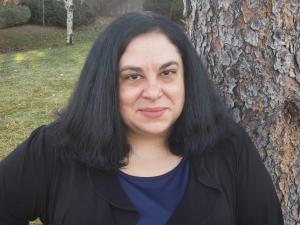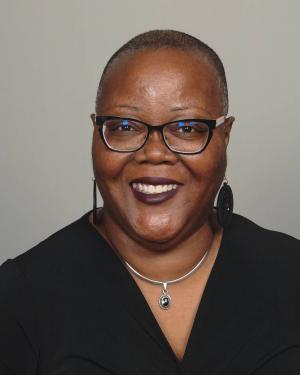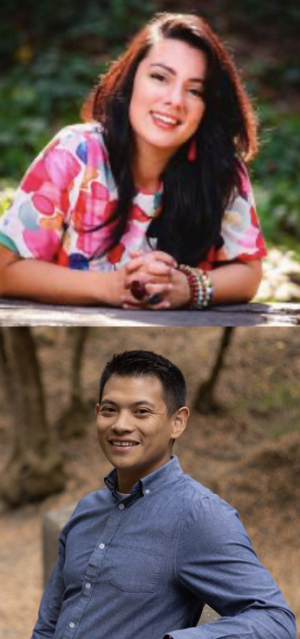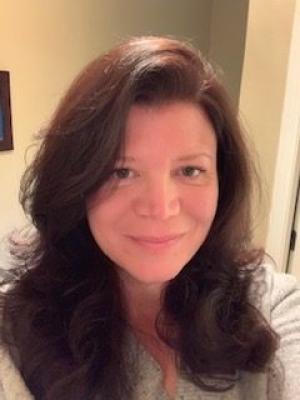Resources

* Karen Yourish, Annie Daniel, Saurabh Datar, Isaac White, and Lazaro Gamio, “These Words Are Disappearing in the New Trump Administration,” The New York Times, March 7, 2025, https://www.nytimes.com/interactive/2025/03/07/us/trump-federal-agencies-websites-words-dei.html.

For the past seven months I have been immersed in storytelling. My small project grant, Black Women’s Storytelling as Healing Pedagogy, has taken me on a journey of wonder, insight, wisdom, knowledge, revelation, and so much more. I had conversations with eleven Black women storytellers who are living their vocational calling at the intersection of the church and academy. Their definitions of story and personal practices of storytelling inform their individual and collective approaches to healing pedagogy that inspires human flourishing. The culminating event of this project was a storytelling excursion to Washington DC, to visit the Smithsonian National Museum of African American History and Culture. This experience propelled me to the mountaintop of storytelling centered on the African Diasporic experience. Let me share one of a multitude of stories that expanded my worldview.Jim Crow Laws and lynch mobs were a common part of the landscape of the United States prior to the civil war. They continue in a variety of ways beyond the strange fruit that hung from southern trees that Ancestor Billie Holiday sang about. Now unarmed and nonviolent Black men, women, and children serve as target practice for those commissioned to serve and protect.Remembering the 1920’s to 1930’s in Marshall, Texas, and at Wiley College in particular, Professor Melvin B. Tolson confronted racist attitudes and actions to establish a debate team which he knew would be equal to any white teams during that time. The students’ have been given the name “The Great Debaters” and competed in the first inter-racial debate ever held in the history of the south.The film, “The Great Debaters,” was introduced to the world in 2007. The story centered around the young students and their coach, Tolson, played by the film’s director, Denzel Washington. “The Great Debaters” is one of my favorite movies because of its historical significance and embodiment of Black Excellence.During my tour of the museum, I marveled as I thoughtfully and carefully viewed the exhibits and artifacts. One exhibit in particular caught my eye. It was a flier depicting the original Great Debaters from Wiley College. I found myself drawn to the photos of these young men and women, recalling the struggles and obstacles they had to overcome as they sought to establish themselves as just as good or better than their white counterparts in the field of forensics. As I stood there reflecting and paying homage to my Wiley College ancestors who faced the realities of domestic terror in the south, I heard the word “RESOLVED,” in my heart, mind, soul, body, and spirit.During a debate, a resolve is a specific statement or question up for debate. It is also a determination to do or refrain from doing something. Resolve is to come to a conclusion. I asked God, what is the RESOLVE, or what is to be determined, as I engage, explore, and experience the museum? I was led to Psalm 118: 17. BE IT RESOLVED: “We (Black people) will not die, but live and proclaim what the Lord has done.” This is the story of MY people throughout all generations. We will not die, but live, and will proclaim what the Lord has done. Ancestor Maya Angelou with her soul’s conviction said it poignantly in her world-renowned poem, “And Still I Rise”:Out of the huts of history’s shameI riseUp from a past that’s rooted in painI riseI'm a black ocean, leaping and wide,Welling and swelling I bear in the tide. Leaving behind nights of terror and fearI riseInto a daybreak that’s wondrously clearI riseBringing the gifts that my ancestors gave,I am the dream and the hope of the slave.I riseI riseI rise. RESOLVED—We will not die, but live, and proclaim what the Lord has done.

One exercise that has sustained me throughout these last three years of a global pandemic has been writing letters to my Beloveds. As a child who was always on the move, inhabiting la frontera, physically and intellectually, writing to friends in my home country was a way to remain grounded while sharing glimpses and shifts in my inner landscapes in embodied ways. Epistolary practices have connected peoples across space, time, and geographic divides for millennia. So ancient and so distant, this tradition remains so close, so potent, and so alive. Several religious traditions are quite familiar with this form of expression. Think of the Apostle Paul, who wrote to many communities in response to specific urgencies. I believe such a poetic-prophetic exercise has helped generations of our kin to be reassured, connect to their roots, and move through many dangerous crossroads. As I write these words, I am reminded that it is election day in my home country of Brazil. I don’t take the right to vote for granted as it was an impossibility some six decades ago. Paulo Freire, from whom we have all learned a lot about education, shared reflections in his A Pedagogy of Hope (1992) on what it was like to be forced into sixteen years of painful exile following the 1964 coup d’état. Letter writing was essential to him during those treacherous years. A lot of what later became known as the core of his teaching philosophy and praxis was developed in dialogue with distant friends, communities, and home country, many of whom he communicated with via letters. In his Profesora Sim, Tia Nao: Cartas a Quem Ousa Ensinar (1993), Freire indicates in the very title of the book that he would be communicating with his audience through letters to those who dare to teach. I suspect that Freire chose such a mode of communication precisely because of the impact phrases such as “Dear Comrades, Dear Co-conspirators” may have on readers. These words have the power of disarming us, conjuring a type of openness to our sensorial and embodied experiences. More than academic, abstract, and conceptual knowledge, those who dare to teach know that accessible, clear, and heartfelt content is not necessarily simplistic or superficial. On the contrary, it is drenched with histories, as Freire put it. He often wrote about how one never arrives alone in any context, whether to exile, a classroom, or the reading of a letter. Our bodies are, indeed, drenched in history, carrying an overlay of feelings, desires, memories, cumulative knowings, worldviews, longings, saudades, frustrations, trauma, and tensions that live at the threshold of our texts and contexts. For Freire, writing letters while in exile was a way to preserve his identity while inventing new ways of living and being and loving in unknown, and often strange, countries. Letter writing became a way to educate his affections, as he put it, and of coping with the insurmountable challenges of his geopolitical condition while resisting the urge to succumb to naive optimism. This fall semester, I have the immense pleasure of co-teaching an online class on spiritual formation with Dr. Aizaiah Yong at the Claremont School of Theology. As we began thinking of how to “Bless the Space Between Us,” between the weekly assignments, among the diverse time zones and geographic locations, an idea emerged of incorporating epistolary practices in what we named SpiritLetters. At the end of each week, we take turns writing a reflection on how our weeks have been, what kinds of spiritual practices have sustained us, and what types of literature, art forms, prayers, and blessings have given us nourishment as our lives unfold. These experiments with letter writing in the context of our teaching-learning community are intended to share a kind of presence that enacts, embodies, and evokes a sense of deep regard and warmth that only this medium can radiate. The Irish teacher and poet John O’Donohue is responsible for inspiring and inspiriting both our SpiritLetters and this blog post’s title. His book To Bless the Space Between Us (2008) offers readers insights, comfort, and company in our spiritual journeys. He reflects: The commercial edge of so-called “progress” has cut away a large region of human tissue and webbing that held us in communion with one another. We have fallen out of belonging. Consequently, when we stand before crucial thresholds in our lives, we have no rituals to protect, encourage, and guide us as we cross over into the unknown. For such crossings, we need to find new words. And these new words that slide from our minds to our hearts, spilling into the pages as SpiritLetters, are offered as blessings and invocations that hopefully can accompany teacher-learners in their academic journeys. In what follows, Aizaiah Yong shares a bit of the impact SpiritLetters have had on him. As a teacher and scholar who is deeply influenced by the Christian contemplative tradition as understood by Raimon Panikkar and Julian of Norwich, it is important for me that the practice of intellectual learning be deeply tethered to the practice of embodied living. The practice of writing a weekly SpiritLetter to our learning community has supported the intention of harmonizing intellectual learning with embodied living in two important ways: (1) providing an opportunity to slow down and be more fully present to the insights and ruminations offered from within the class and (2) inviting a deeper and more profound integration of them in our global social witnessing, which is an important element necessary when tending to collective trauma. Through the practice of SpiritLetters, I have found that slowing down is less about the speed by which I perform a task, but rather the level of intensity in which I engage. In this sense, to slow down allows one (for me as the teacher-learner and co-facilitator) to be more fully aware of the precious and invaluable insights offered by each person in the class through a stance of curiosity and compassion. Here, I am disciplining myself to avoid prematurely entering into critical analysis but instead choosing to contemplate first, allowing for their words, assignments, and questions to unfold within me. A process of slowing down invites a more embodied awareness of how the class is flowing and also informs a more holistic response, which in turn becomes the words written through the SpiritLetter. SpiritLetters ultimately then become a moment of mirroring back to the whole learning community what I am hearing and then asks those wisdoms to be more deeply integrated in the class journey’s forward. SpiritLetters offer a space to reflect back what is arising and to allow for a finer-tuned calibration that guides our collective responses as persons and communities. I consider this a contemplative and trauma-informed approach to teaching which Thomas Huebl describes as “resilience building as collective coherence.” Huebl writes, “Resilience building means that I am not just a cognitive participant of the communities I am part of, it is that I feel it. When we are aware of each other we create collective coherence. That is especially important when we go through disturbing times.”[*] As we continue to invite more diverse and geographically-distributed learning communities into our classrooms of higher education, I hope that we continue to practice emergent pedagogical approaches that allow us to slow down, be more fully aware of the relations that support us, and invite a deeper collective integration of the wisdom revealed. It is our hope that these reflections will invite you to inhabit these spaces of co-learning and co-teaching with an invitation to cultivate your own pedagogical practices of being and becoming, even in the face of multiple crises and impossibilities. May we remember to laugh, rest, regenerate, and seek tenderness so that we can continue to bless the spaces between us. In togetherness, Aizaiah and Yohana [*] https://thomashuebl.com/what-is-global-social-witnessing/

Who or what is God? Words can only say so much about who God is or what God isn’t. Thankfully our thinking isn’t limited to words. Through Art Theology -- using the creative languages of the arts -- we can form new ideas, questions, and perceptions about God. Let the words go and think in color. Thinking back to the very first ideas of God you ever had, what color comes to mind? Gray... Gray was the color of the beard of the old man in the sky, the first image I had of God the Father. Gray was the color of the clouds he sat on. In painting this first idea, I used cold, dark, black grays illustrating the vast remoteness of this idea of God. I began incorporating yellows and whites and softening places within the gray, creating warmth in the painting. As I did so I recalled my childhood struggle to comprehend how this cold, dark, mysterious God also made me and loved me unconditionally. [caption id="attachment_247214" align="alignnone" width="467"] The Cloud of Unknowing Angela L. Hummel 11x14 Acrylic on Wood[/caption] My concept of God changed when I was introduced to the idea of Jesus and the idea of God’s personal love. The gray remains but softens even more and I introduce an abstract brown line. God’s love expressed through Jesus felt so intimate and personal that I have at times a sense of knowing the nook of his neck, of having rested my head upon that shoulder line. Yet, I could not tell you what his eyes or nose look like. In some ways I do not know him at all. In other ways, that personal love of God is the most real thing in my experience. [caption id="attachment_247215" align="alignnone" width="390"] Personal Love Angela L. Hummel 11x14 Acrylic on Wood[/caption] Stepping back and looking at the first two paintings I felt a new question arising. I was physically uncomfortable as I reflected on how masculinely gendered my ideas of God had been. No matter what we think and understand theologically about God language, we carry these memories in our bodies. I felt myself reaching for new colors and lines: purples, blues, gold, and undulating lines. This next painting incorporates my reflections on Shekinah. Both women and men are made in the image of God. The divine feminine reveals a love that conceives, gestates, labors, births, nurtures, and sustains. [caption id="attachment_247216" align="alignnone" width="467"] Shekinah Angela L. Hummel 11x14 Acrylic on Wood[/caption] God is love. This love is mysterious, personal, intimate, boundaried, male, female, non-binary, fluid like water, beyond our comprehension. How can we reflect the love of God and learn to love in this dynamic way? Regardless of bodily function, all of us can learn to love more deeply by reflecting on how love conceives, gestates, labors, births, and sustains. The Christian focus on moral theology has led to judgmentalism that has caused some people to reject religion. Why don’t we devote as much attention to Christian love -- what this love is and how we live it? We need new ways of exploring this vast idea. We need Art Theology. Art Theology has helped me to move away from a monologic pedagogy into a dialogic way of teaching. When my students paint the colors and lines of their thinking about God they move into new ideas, questions, and dialogue that discursive reasoning alone could not take us into. The understandings that we have arrived at through this method have transformed my classroom into a dynamic place of collaboration where together we have learned to see God as truly other, for who God is, not constrained by our previous limited definitions and arguments. Angela L. Hummel